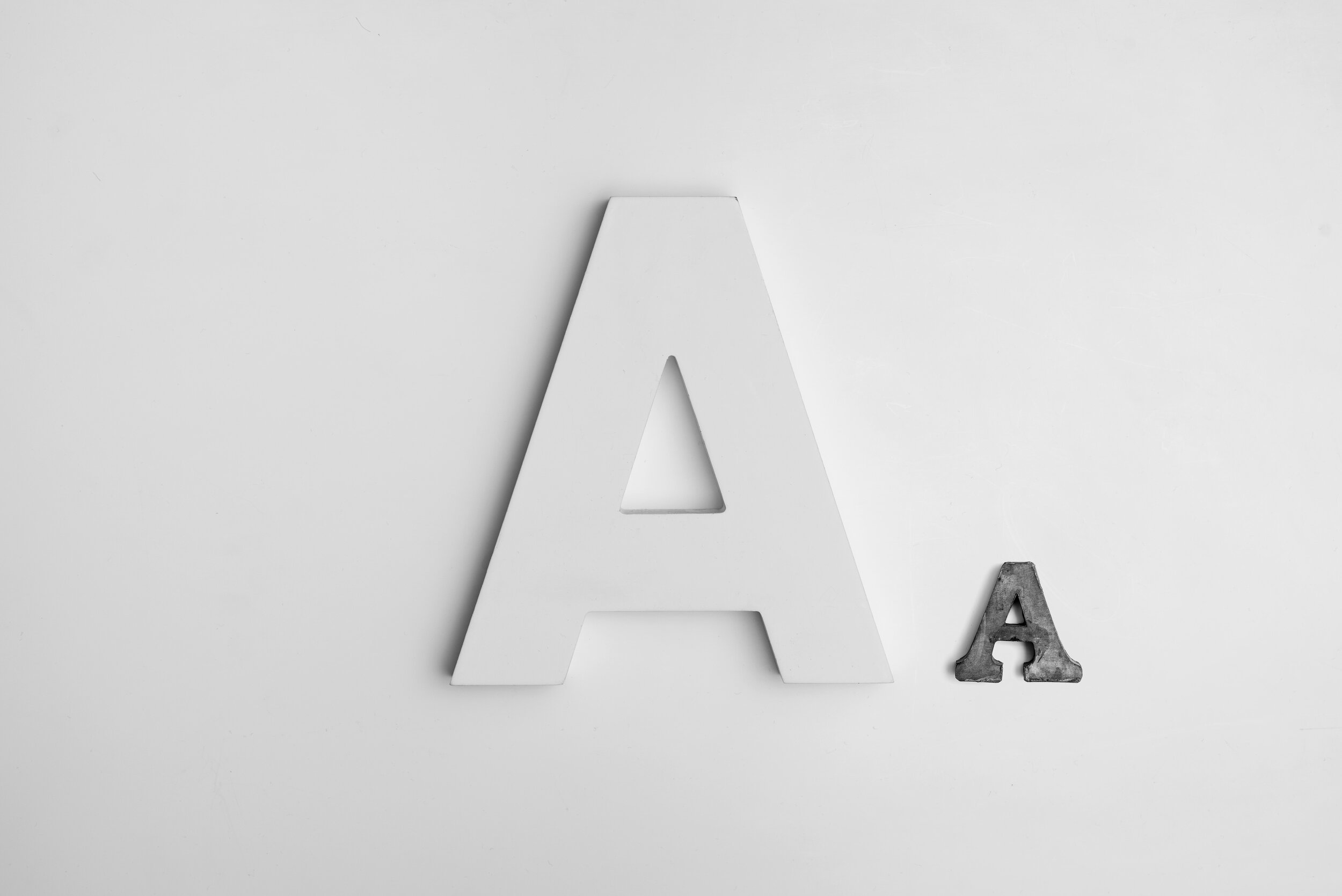Using contrast in the right way when lettering
One big thing when brush lettering, or hand lettering, that if done wrong really throws off your work is using contrast in the wrong way.
Your A may still look like an A but something just won't feel right about it. If your A has the thicker stroke on the wrong side everything will look off - so let's learn which is the right side!
The handy trick
The general rule for contrast, which strokes should be thick and which should be thin, should come from how you would naturally write the letter. Now everyone writes differently but most letters tend to be written in a similar way.
Every time your pencil moves down the page that stroke should be thick, and whenever it moves up the page that stroke should be thin. It actually comes from historic calligraphy, where when the nib goes down the page it's a thicker line weight. This works for all sans, sans serif, and script typography.
Some examples
The best way to explain what I mean is by sharing some examples.
Both the A and the N's on the left look like an A and an N right? But there's just something not quite right, especially with the N. Unless you're the one person I know who actually draws an N backwards you'd always move up the page when doing the vertical strokes, therefore they should be thin. Then the connecting diagonal stroke goes down the page so should be thick.
Simple enough? Let's see some other examples.
Again see how the M and P's on the left look like an M and a P? However, the M just feels very heavy and almost like it may collapse in on itself? Following our thin up, thick down technique the M on the right looks much better and more even.
Let's look at the P in particular for a minute now, as it has a curve. The curve starts horizontally and then when moving vertically it goes down, and then horizontal again. Therefore, it should be thin throughout the horizontal sections and thick in the vertical section as the pencil will go down the page.
There you go! Thin up, thick down. If you're struggling just write out the letter as you would usually and see how your pencil flows. Once you’ve got the hang of it you can draw all the letters!
- Sophie
Pin for later!
If you found this useful be sure to share it to Pinterest to come back later, and so others can find it too! Use the Pinterest save button by hovering over the image below.






